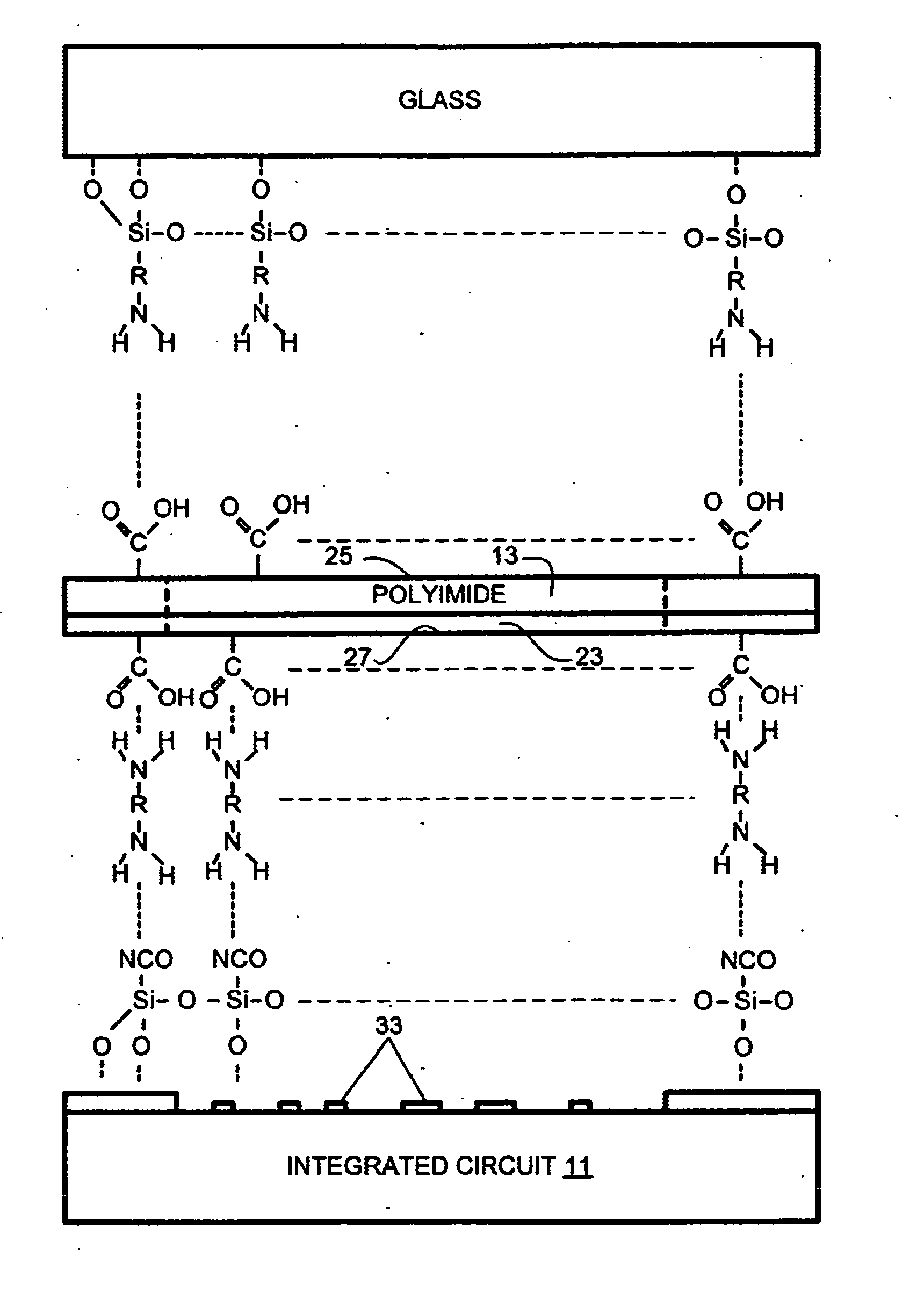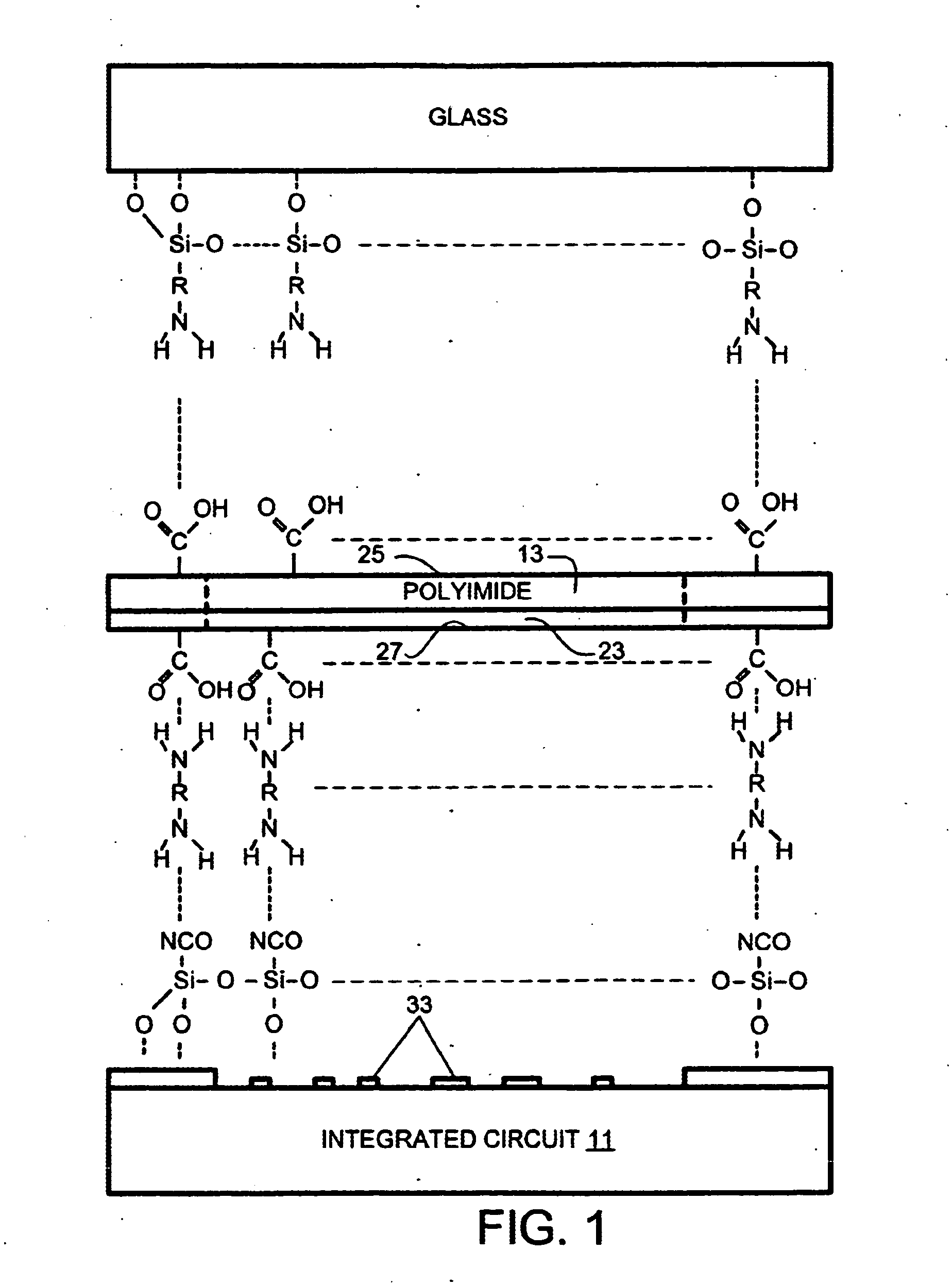Fluid-channel device with covalently bound hard and soft structural components
a fluid channel and structural component technology, applied in the field of analytical chemistry, can solve the problems of glue being a potential source of chemical contamination, glue being subject to failure, and the additional component of the clamp must be adjusted and adjusted, so as to reduce the risk of contamination of free-moving adhesive components
- Summary
- Abstract
- Description
- Claims
- Application Information
AI Technical Summary
Benefits of technology
Problems solved by technology
Method used
Image
Examples
Embodiment Construction
[0017] The invention provides for covalently bonding an integrated circuit 11 and a glass cover 13 to a polyimide intermediate structure 15 as shown in FIG. 1. This process occurs in the context of the manufacture of a microfluidic device 20, shown in FIG. 2 in accordance with a method M1 flow charted in FIG. 3. The polyimide structure 15 has a relatively thick, 5 mil, non-thermoplastic (Kapton H) layer 21 and a relatively thin, 1-micron, thermoplastic coating 23 on one side.
[0018] At step S1, glass cover 13, precleaned using standard (e.g., RCA) procedures, is chemically modified with aminopropyl trimethoxysilane to render an amine-rich surface (FIG. 1). At step S2, polyimide structure 15 is activated by dipping in potassium hydroxide solution (1M, room temp, 1 h); this is followed by HCl solution (ca 0.2M) to displace the salt ions, exposing carboxyl groups at the uncoated polyimide surface 25. Note that steps S1 and S2 can be performed concurrently or in any order.
[0019] At ste...
PUM
| Property | Measurement | Unit |
|---|---|---|
| thick | aaaaa | aaaaa |
| pressure | aaaaa | aaaaa |
| pH | aaaaa | aaaaa |
Abstract
Description
Claims
Application Information
 Login to View More
Login to View More - R&D
- Intellectual Property
- Life Sciences
- Materials
- Tech Scout
- Unparalleled Data Quality
- Higher Quality Content
- 60% Fewer Hallucinations
Browse by: Latest US Patents, China's latest patents, Technical Efficacy Thesaurus, Application Domain, Technology Topic, Popular Technical Reports.
© 2025 PatSnap. All rights reserved.Legal|Privacy policy|Modern Slavery Act Transparency Statement|Sitemap|About US| Contact US: help@patsnap.com



